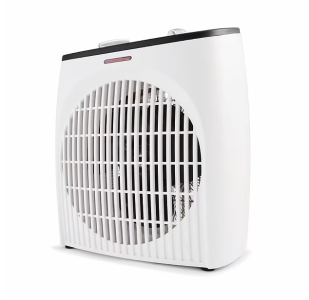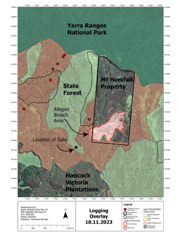Shoppers reconsider $15 Kmart winter buy after unexpected warning
By
Gian T
- Replies 0
As the winter chill settles in across Australia, many of us are on the hunt for affordable ways to keep warm without sending our electricity bills through the roof.
It’s tempting to snap up a bargain heater from your local Kmart—after all, who can resist a $15 price tag?
But before you rush out and pop one in your trolley, there’s an urgent warning circulating from fellow Aussies who’ve learned the hard way that some budget buys can come with a hidden sting.
Let’s set the scene: you’re shivering in your lounge room, you spot a compact fan heater for just $15, and you think, 'What a steal!'
But as it turns out, that little heater could end up costing you hundreds—if not thousands—more than you bargained for.
Sydney mum Jaz recently took to social media to share her cautionary tale, and her video has since gone viral, racking up over half a million views.
'Do not use the Kmart heater. I know they’re $15—don’t use it.' Jaz explained that she only used the heater briefly each night to warm her bedroom, but when her electricity bill arrived, she was floored: $1000 for just one month.
She’s not alone. The comments section quickly filled with similar stories from young renters and students, all echoing the same regret.
Another Sydneysider, Harriet Burns, posted her own TikTok, joking, '$15 to buy, $500 to run,' as she snuggled up in a fluffy pink dressing gown instead of relying on her heater.
It all comes down to how these little fan heaters work. Most use resistive heating, which is notorious for guzzling electricity.
Typically, they draw between 1800 and 2400 watts per hour—far more than your fridge, TV, or even a reverse-cycle air conditioner.
If you’re running the heater for a couple of hours each night, especially in a poorly insulated home, the costs can skyrocket before you know it.
And if you’re on a time-of-use electricity plan, using the heater during peak hours (usually early evening) can make things even worse for your wallet.
One of the sneakiest aspects of this problem is how electricity bills are usually issued quarterly in Australia.
That means you might not notice the damage until it’s too late. By the time the bill lands in your inbox, you could be hundreds—or even thousands—of—dollars out of pocket.
Some providers now offer monthly billing, especially if you have a smart meter, which can help you keep a closer eye on your usage and avoid nasty surprises.
So, what’s a senior to do? Here are some tried-and-true tips for keeping cosy without breaking the bank:
That $15 heater might seem like a bargain, but as many Aussies have discovered, it could end up being one of the most expensive purchases you make all year.
 Have you had a shocker of a power bill after using a portable heater? Or do you have your own clever tips for staying warm on a budget? We’d love to hear your stories and advice—share your thoughts in the comments below.
Have you had a shocker of a power bill after using a portable heater? Or do you have your own clever tips for staying warm on a budget? We’d love to hear your stories and advice—share your thoughts in the comments below.
Read more: ‘Game-changer’: The Kmart item turning offices into cosy havens
It’s tempting to snap up a bargain heater from your local Kmart—after all, who can resist a $15 price tag?
But before you rush out and pop one in your trolley, there’s an urgent warning circulating from fellow Aussies who’ve learned the hard way that some budget buys can come with a hidden sting.
Let’s set the scene: you’re shivering in your lounge room, you spot a compact fan heater for just $15, and you think, 'What a steal!'
But as it turns out, that little heater could end up costing you hundreds—if not thousands—more than you bargained for.
Sydney mum Jaz recently took to social media to share her cautionary tale, and her video has since gone viral, racking up over half a million views.
'Do not use the Kmart heater. I know they’re $15—don’t use it.' Jaz explained that she only used the heater briefly each night to warm her bedroom, but when her electricity bill arrived, she was floored: $1000 for just one month.
She’s not alone. The comments section quickly filled with similar stories from young renters and students, all echoing the same regret.
Another Sydneysider, Harriet Burns, posted her own TikTok, joking, '$15 to buy, $500 to run,' as she snuggled up in a fluffy pink dressing gown instead of relying on her heater.
It all comes down to how these little fan heaters work. Most use resistive heating, which is notorious for guzzling electricity.
Typically, they draw between 1800 and 2400 watts per hour—far more than your fridge, TV, or even a reverse-cycle air conditioner.
If you’re running the heater for a couple of hours each night, especially in a poorly insulated home, the costs can skyrocket before you know it.
And if you’re on a time-of-use electricity plan, using the heater during peak hours (usually early evening) can make things even worse for your wallet.
One of the sneakiest aspects of this problem is how electricity bills are usually issued quarterly in Australia.
That means you might not notice the damage until it’s too late. By the time the bill lands in your inbox, you could be hundreds—or even thousands—of—dollars out of pocket.
Some providers now offer monthly billing, especially if you have a smart meter, which can help you keep a closer eye on your usage and avoid nasty surprises.
- Layer Up: Invest in thermals, fluffy socks, dressing gowns, and Oodies. Sometimes, the old-fashioned ways really are the best!
- Electric Blankets: These use far less power than a fan heater and can keep you toasty in bed for just a few cents an hour.
- Reverse-Cycle Air Conditioning: If you have one, use it in heating mode. They’re much more efficient than resistive heaters, especially if you only heat the rooms you’re using.
- Draft Stoppers and Door Seals: Keep the warmth in and the cold out by sealing up gaps around doors and windows.
- Hot Drinks: A mug of hot chocolate or tea can warm you from the inside out—and costs next to nothing compared to running a heater all night.
That $15 heater might seem like a bargain, but as many Aussies have discovered, it could end up being one of the most expensive purchases you make all year.
Key Takeaways
- Aussies are warning that Kmart’s $15 portable fan heater may lead to extremely high electricity bills, with some sharing experiences of $500–$1000 power bills after regular use.
- The budget-friendly heater uses a lot of power (1800 to 2400 watts per hour), making it much less energy efficient compared to other appliances, and running it even briefly can significantly increase household expenses.
- Young renters and students are particularly vulnerable to bill shock, especially as electricity bills are often issued quarterly, which can allow excessive charges to build up before being noticed.
- Alternatives like layered clothing, electric blankets, reverse-cycle air conditioning, and simple measures such as draft stoppers can be more cost-effective ways to stay warm during winter, rather than relying on power-hungry fan heaters.
Read more: ‘Game-changer’: The Kmart item turning offices into cosy havens








